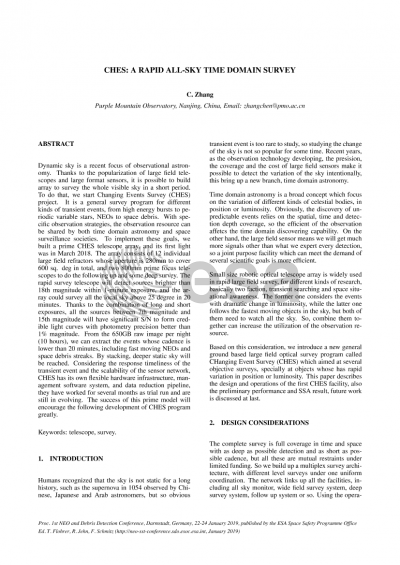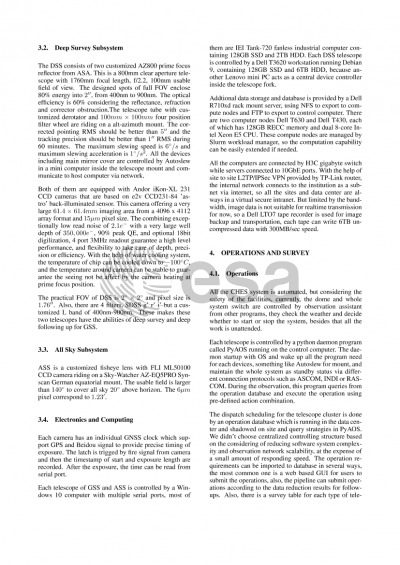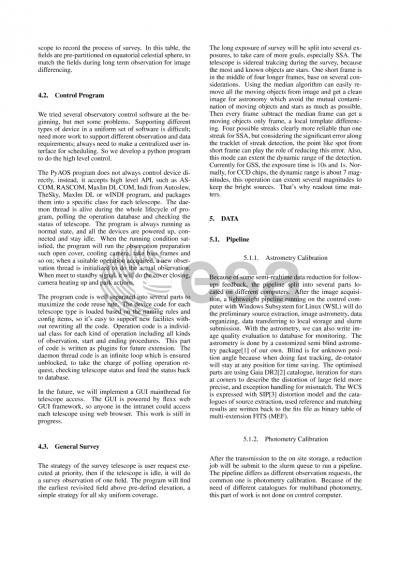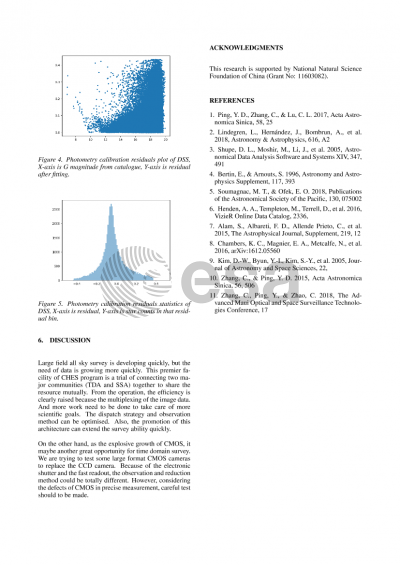Document details

Abstract
Dynamic sky is a recent focus of observational astronomy. Thanks to the popularization of large field telescopes and large format sensors, it is possible to build array to survey the whole visible sky in a short period. To do that, we start Changing Events Survey (CHES) project. It is a general survey program for different kinds of transient events, from high energy bursts to periodic variable stars, NEOs to space debris. With specific observation strategies, the observation resource can be shared by both time domain astronomy and space surveillance societies. To implement these goals, we built a prime CHES telescope array, and its first light was in March 2018. The array consists of 12 individual large field refractors whose aperture is 280mm to cover 600 sq. deg in total, and two 800mm prime focus telescopes to do the following up and some deep survey. The rapid survey telescope will detect sources brighter than 18th magnitude within 1-minute exposure, and the array could survey all the local sky above 25 degree in 20 minutes. Thanks to the combination of long and short exposures, all the sources between 7th magnitude and 15th magnitude will have significant S/N to form credible light curves with photometry precision better than 1% magnitude. From the 650GB raw image per night (10 hours), we can extract the events whose cadence is lower than 20 minutes, including fast moving NEOs and space debris’ streaks. By stacking, deeper “static” sky will be reached. Considering the response timeliness of the transient event and the scalability of the sensor network, CHES has its own flexible hardware infrastructure, management software system, and data reduction pipeline, they have worked for several months as trial run and are still in evolving. The success of this prime model will encourage the following development of CHES program greatly.
Preview







